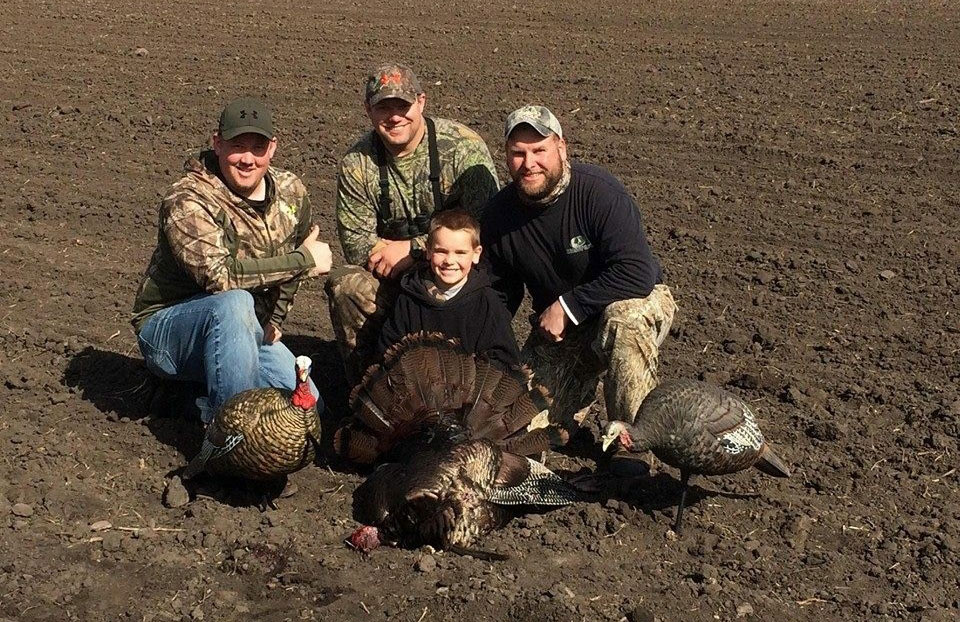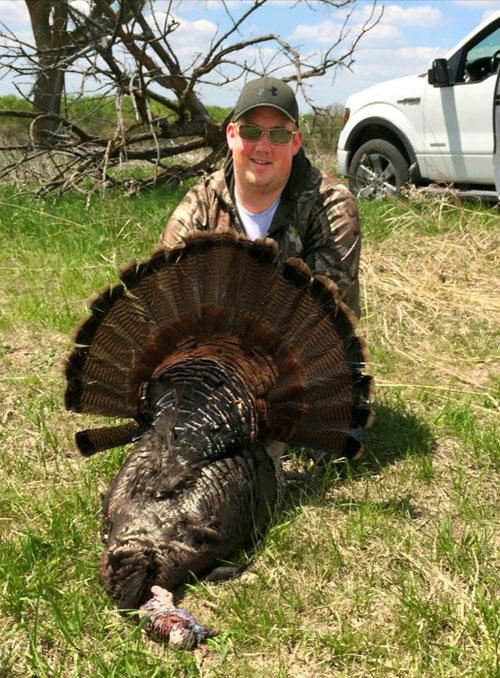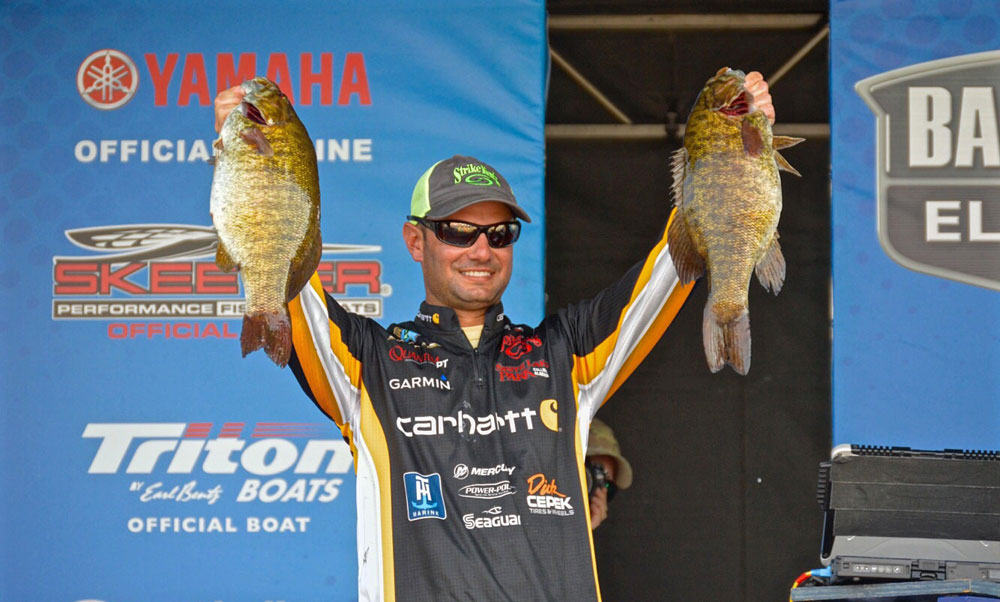Brad Fitzgerald | Mossy Oak ProStaff

I not only hunt turkeys in Minnesota, which has one of the latest turkey seasons, but also in Missouri, Nebraska, South Dakota and Kansas. I’ve found that Minnesota turkeys are easier to pattern than turkeys in other states. But these turkeys also are much more sensitive to hunting pressure than turkeys in other states I’ve hunted. For instance, when I’ve hunted gobblers in Nebraska, you can spook a turkey and then sit in that same spot and call in that turkey again. However, in Minnesota, if you bump a turkey, you’ll probably not be able to call him back into that same field for at least a week.
Turkey hunting has been tough in Minnesota, from the time I was 13 years old until I was 21. The first year I turkey hunted, I called a gobbler in for a friend of mine and he harvested that bird. I called in 32 different gobblers for friends and relatives before I ever harvested my first tom. I’ve had plenty of bad luck.
The first morning of the first year I went out turkey hunting, I killed three coyotes. The second morning I hunted turkeys, I shot a raccoon that was chasing turkeys away from my decoy. I had other hunters who, when they heard me calling and saw my decoy, tried to slip up on my decoy and spook the gobbler I was calling. I guess I was the worst turkey hunter but the best amateur guide in the State of Minnesota for those eight years I went gobbler-less.
I don’t know why I could call in gobblers for other people but was unsuccessful in calling in a gobbler for myself. During those eight years, I hunted both public and private lands. In that time, one of my memorable hunts was when I hunted with one of my best friends, Tanner Sorensen.
On that morning, 10 inches of snow were on the ground. Tanner had had a terrible time getting a gobbler within gun range. He could call the birds in to 60-70 yards; however, the gobblers never would commit to coming to within gun range. So, Tanner and I both started calling and had two gobblers come over the crest of the hill that then hung up at about 60-70 yards away. Tanner asked me, “Should I shoot? Should I shoot?” He was getting very excited to be hunting on this last day of his 6-day hunt. I recommended to Tanner that we give the birds a moment and see if they’d come on in to us. Eventually one of the gobblers ran in and jumped on our decoy.
Once Tanner shot, and the gobbler went down, Tanner was so excited. That bird weighed 24 pounds and had a 10-inch beard, which was about standard for an early-season gobbler in Minnesota, where many big turkeys live.
When my turkey drought finally ended, I was hunting my family’s 40-acre farm, which is west of West Concord, Minnesota. I’d been hunting this same bird for three years. We’d even given him a name, the Paintbrush Gobbler, because his beard was about the size of a paint brush. I had multiple trail-camera photos of this gobbler and had hunted him in the spring and in the fall. I had decided that he was the only bird I would take during the three years I hunted him. The Paintbrush Turkey was to me like a trophy buck would be to a deer hunter.

I had begun hunting this bird at the beginning of turkey season with archery tackle. I liked to hunt turkeys with a bow and arrow, because I could hunt the entire turkey season with a bow. Several times I had some very nice gobblers show up that I could have taken, but I passed them up to wait on the Paintbrush Gobbler to hunt. My mom joined me on the evening of May 20th and sat in the blind with me. As we sat quietly, a tom gobbled right beside the blind and nearly scared my mom and me to death.
I told my mom, “Let’s get our facemasks and gloves on and close all the windows in the blind behind us. Then the turkey can’t spot us through the blind.”
Two feet in front of the blind, I saw a huge beard. All I could hear was my mother breathing very heavily. We had that big, ole gobbler right in front of us. He turned and looked into the blind, and I could see his Paintbrush beard. The bird turned and looked away from us at the Avian-X jake decoy. He started bumping the decoy with his chest. Once the gobbler turned away from us, I drew my Quest Primal bow with a Rage broadhead on the front of my arrow. I aimed to the right and high on the gobbler’s wing where I knew the tom’s lungs were. I knew that the Rage broadhead I was shooting would make a 2-inch cut, and a turkey’s lungs weren’t very big. At that range, I knew I could make the shot.
Just before the shot I clucked twice on a diaphragm call, and the tom dropped his strut and turned broadside to me. Once the broadhead hit the tom, he fell back about two feet, got to his feet, ran about 15 yards and went behind a downed cherry tree, right behind an elm tree. When I went to recover my gobbler that had eluded me for three years, I found a couple of Morel mushrooms near him that I could cook with the Paintbrush Gobbler. Immediately, I dropped to my knees and thanked the Good Lord for letting me take this bird. I know God doesn’t have to give you anything, and Mother Nature doesn’t owe me a thing. So, having to work three years for a bird like the Paintbrush Gobbler was an encouragement to me and reminded me again that by staying persistent, good things can happen.






























